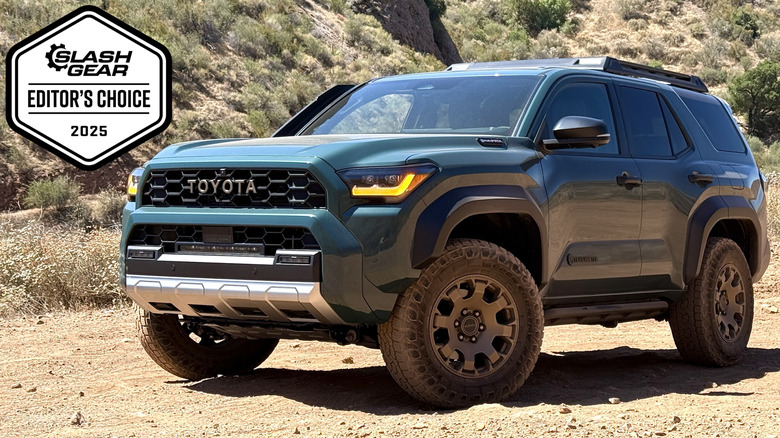
Redesigning an icon like the Toyota 4Runner is tricky business. Enthusiasts become attached to popular engines, features, and design language over time – especially in specialized vehicles like off-roaders. The longer those features last, the more attached brand and nameplate loyalists can become. So the fact that the fifth-generation 4Runner carried on for 14 years before it was redesigned, makes redesigning it a potential minefield.
Toyota hasn't exactly wiped the slate clean with the all-new 2025
4Runner, but they've overhauled it in a big way with modern styling, modern powertrains, and all sorts of tech. They've committed what some might consider the Cardinal sin of making it a hybrid (at least on the top trims) and they've eliminated the old V6 from the lineup entirely.

Thankfully, the new engine has bigger towing capacity, massively improved fuel economy, and more power than the old V6. On top of that, the interior updates stay true to the 4Runner's rugged personality while adding a bit of refinement to an old recipe. And if there were ever any doubt, it can easily be dispelled, because the 4Runner is more capable off-road than it's ever been.
Read more: 10 Of The Most Reliable Toyota Engines Ever Built, Ranked
Powertrain Upgrades Are The Heart Of The Redesign
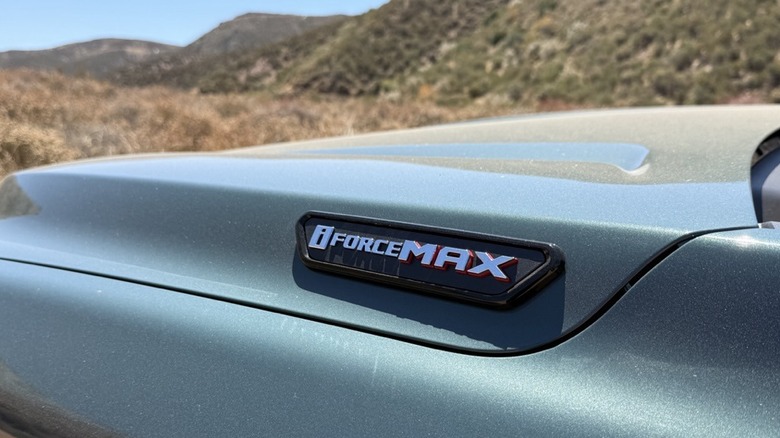
Replacing the 4Runner's old V6 is a set of new four-cylinder engines. The previous-generation's dated 4.0-liter V6 was paired with a five-speed automatic transmission and it put out 270 horsepower and 278 lb-ft of torque. It could tow as much as 5,000 pounds and across the board it was rated at 17 mpg combined by the EPA, both of which are substandard numbers in 2025.
The standard turbocharged 2.4-liter four-cylinder engine on the new, sixth-generation 4Runner produces 278 hp and 317 lb-ft of torque. It's paired with a much more modern, smooth-shifting 8-speed automatic transmission on every trim level. That extra torque, along with other changes, gives the 4Runner a maximum towing capacity of 6,000 lbs. Models with that base powertrain are rated at 21 and 22 mpg combined by the EPA, which isn't particularly efficient amongst big family SUVs, but it's certainly an upgrade over the old model.
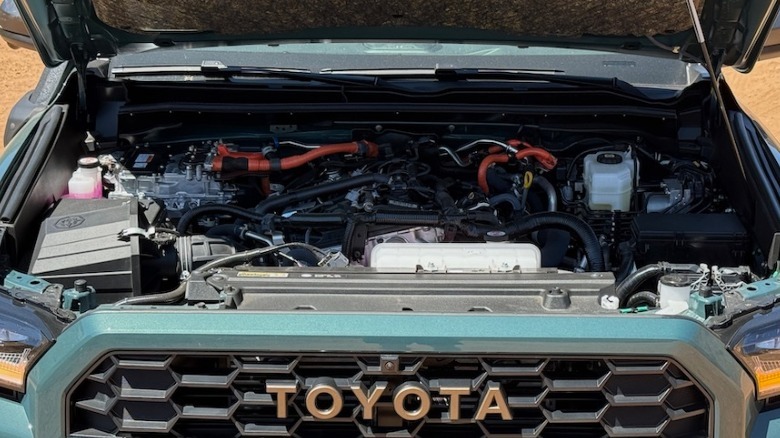
The optional powertrain for 2025 4Runners is the 2.4-liter four-cylinder paired with a hybrid system, increasing output to 326 hp and 465 lb-ft. Along with the massive infusion of extra torque, the 4Runner's fuel economy rating goes up to 23 mpg combined. The Trailhunter trim level that we tested comes standard with the i-Force MAX hybrid powertrain and it's every bit as powerful as you need it to be.
Extra Power But It's During A Growth Spurt
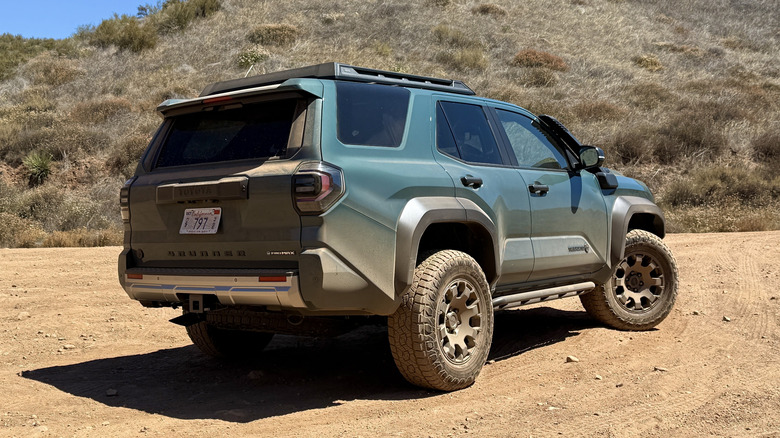
The i-Force MAX powertrain is up to the task of getting the 4Runner moving, but it's not exactly dramatic. Off the line, the extra torque gives the hefty SUV a strong push. Making passes on the highway is easy enough and the new 8-speed upshifts and downshifts quickly. The four-cylinder/hybrid combo is strong enough that most V6 loyalists should warm to its on-road performance over time. More power is always better, but the extra power the new 4Runner has comes at a price.
In general, the 4Runner competes against lots of mid-size SUVs, especially off-road friendly ones like the Jeep Wrangler and the Ford Bronco. But it's almost 5 inches longer from nose to tail than the previous generation (it's 194.9 inches long now), pushing it closer to SUVs like the Dodge Durango or the Honda Pilot. That extra space on the outside translates to a few extra inches of legroom, though; it's up from 32.9 to 34.8 inches in the second row and up from 29.3 to 31.8 inches in the third row.
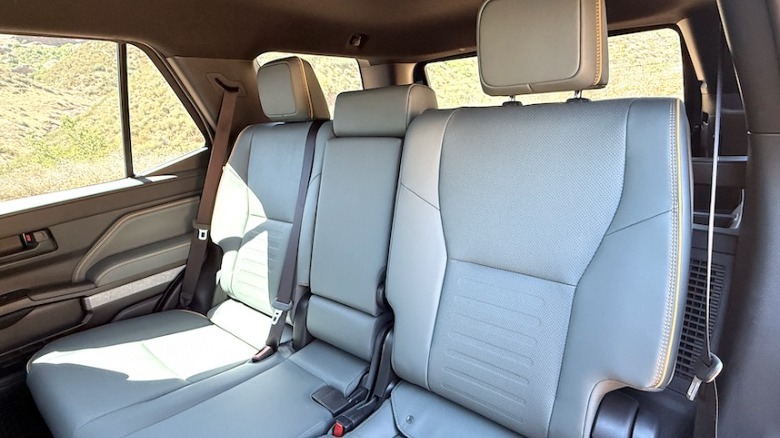
The side effect of that growth, however, is extra weight. The Trailhunter's curb weight is 5,500 lbs, or 750 lbs more than the old TRD Pro. Under braking and especially through corners, you can feel the 4Runner's heft. It wasn't exactly nimble before, but the latest 4Runner is a much more substantial vehicle these days.
You'll Have Trouble Challenging It Off Road
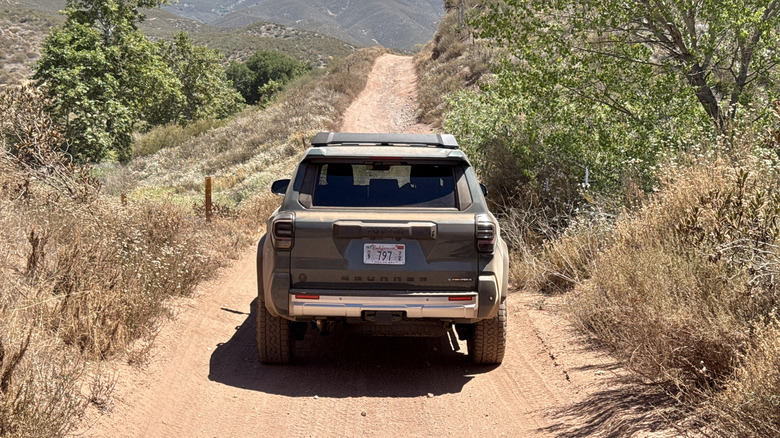
The Trailhunter is at the top of the 4Runner's trim-level pecking order, side-by-side with the TRD Pro, but the Trailhunter is specifically aimed at Overlanders. It uses Old Man Emu forged shocks with remote reservoirs, 33-inch all-terrain tires, upgraded rock rails, and high-strength steel skid plates.
Finding terrain that's arduous enough to challenge rigs like the Toyota 4Runner Trailhunter is legitimately tough. With all the hardware upgrades, the Trailhunter has 10.1 inches of ground clearance, 24 degree breakover and departure angles, and a 33-inch approach angle. I had to go pretty deep into my typical off-road testing area just to find ruts and rocks that were even remotely problematic.
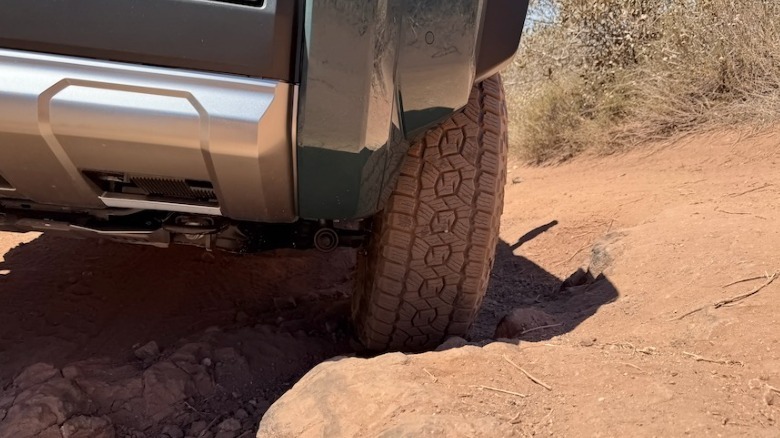
The front bumper cuts away in front of the tire, not quite as aggressively as it does with rivals like the Jeep Wrangler, but this missing body work means you can go right up to steep, rocky obstacles and hit them head-on with little fear of scraping the front end. Fire roads, creek crossings, and steep hills are all easy to tackle. Tougher terrain is dealt with under absolutely zero duress with features like the stabilizer bar disconnect and locking rear differential.

The 4Runner has a high hood so seeing where the corners of the vehicle are while you're off-roading is particularly difficult. The 360-degree camera (Toyota calls it Multi Terrain Monitor) helps you avoid unseen obstacles, but it turns off once you've got a little bit of speed going.
It's The Little Things That Count
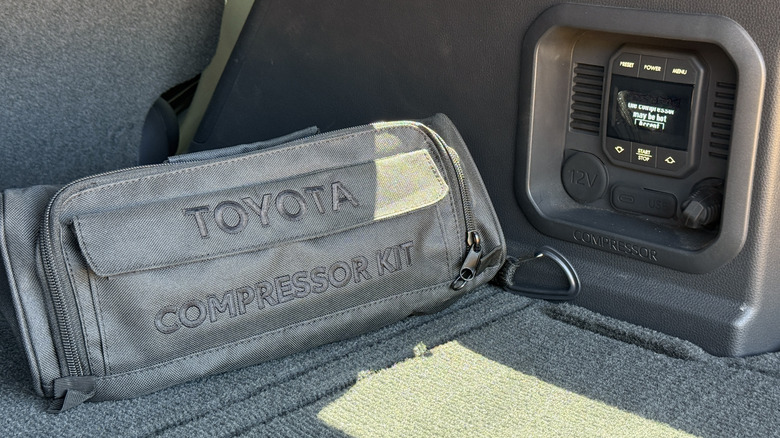
When it comes to off-road SUVs, it's about more than just basic capability. The 4Runner can offer all the impressive static angles, robust suspension, and massive tire options buyers want, but there's lots of value in providing extras too. And the 4Runner has lots of extras.

The on-board compressor is a regular off-roader's dream. Airing up and down to return to the asphalt is always a concern and now it's included in the overall package. Built-in Rigid LED foglights and a 20-inch light bar provide tons of light for dark trails. Four pre-wired aux switches make it easy to hook up even more baseball-stadium level lighting on the exterior of your 4Runner, or just some cool accessories.
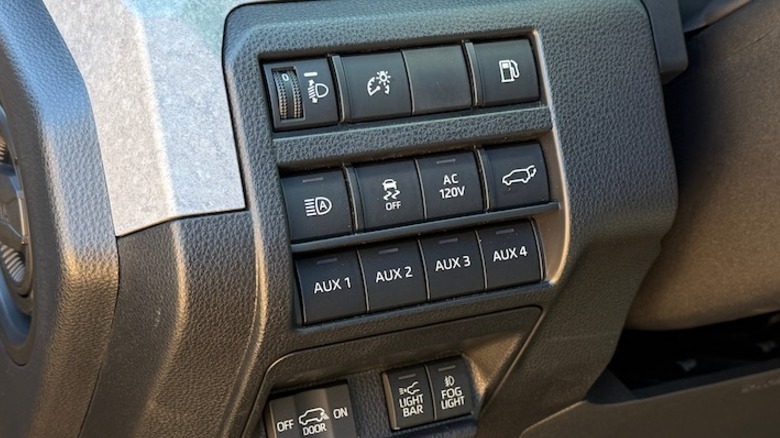
The drop-down rear window is a Toyota staple that's been around for years and we're glad it's still here. Long items like surfboards, snowboards, or just plain old 2x4" boards -- they can all hang out the back on the way to your destination with the trunk serving as a make-shift truck bed.
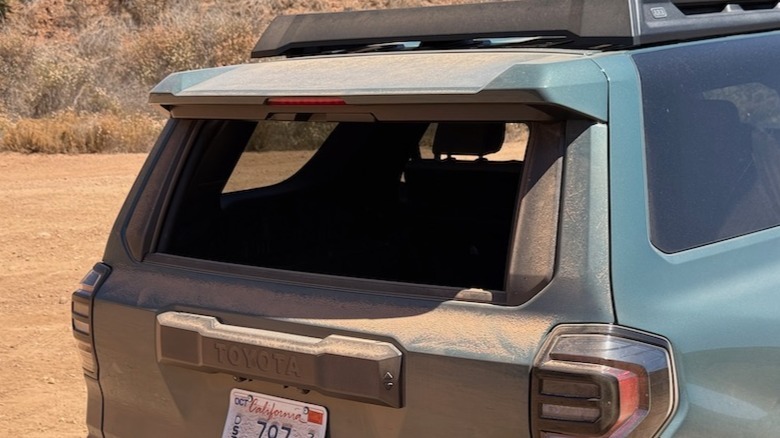
The removable JBL speaker from the dashboard is a great party trick too. Oh, and the little built-in rechargeable camping light that's stored on the side of the dashboard? Another great touch.

It's something you could buy at your local camping store for $20, sure, but now it's all part of the vehicle experience and one less thing you'll have to pack in your camping tote.
Quiet And Comfortable, Except For The Snorkel
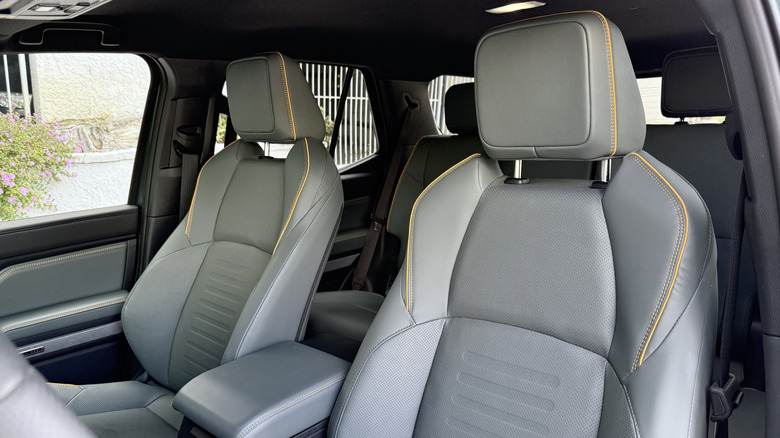
More than just soaking up bumps on rocky trails, the 4Runner is adept at soaking up big road imperfections and potholes too. With big tires and lots of travel in the suspension, there's not much that can upset the 4Runner in Trailhunter trim. The seats are comfortable and well-padded but minimally bolstered, so you'll slide around a bit if you take the 4Runner up a curvy mountain road at an enthusiastic pace.
On the highway, the 4Runner's cabin is relatively quiet with just a bit of wind noise and the road noise you'd expect from an off-road SUV with all-terrain tires. A bit of extra wind noise was generated by the ARB roof rack, but that's to be expected. The most persistent and annoying noise, however, comes from the Trailhunter's intake snorkel.
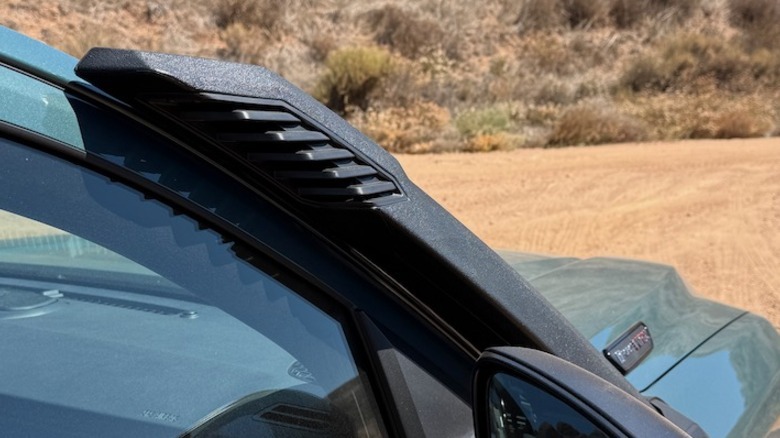
The snorkel is designed to keep water out of the engine, but it makes a lot of noises during normal driving. When the engine is under load, generally at freeway speeds above 60 mph, there's a constant whirring from the turbocharger being sent through the snorkel. On hard acceleration you can hear the turbocharger spool up and the extra air gives a big WOOSH when you lift off the throttle. It's fun and quirky at first, but there's virtually no speed at which the noises go away. This would probably get annoying enough over time that I'd either remove the snorkel, or buy the TRD Pro trim instead.
Lots Of Storage Space And Tech
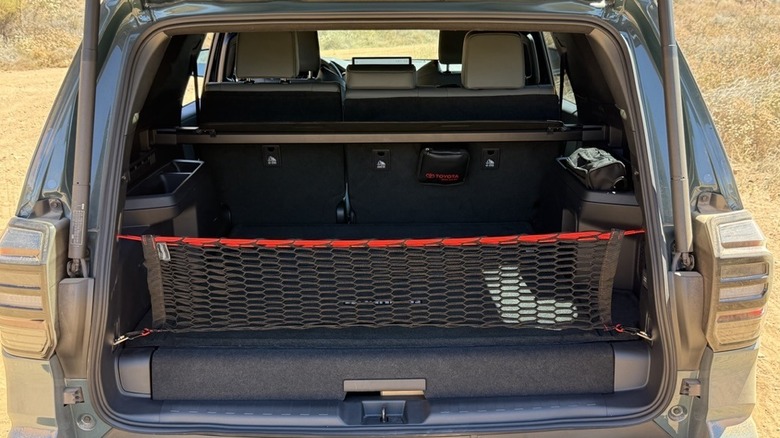
The inside of the 4Runner is spacious and has all sorts of storage options. Behind the rear seats there's 48.4 cubic feet to play with (90.2 cubic feet if you fold the second row flat). A third row of seats is available on trims other than the Trailhunter, but it's relatively small and probably best left for children. There are cubbies, compartments, and cupholders (all 12 of them) everywhere you look. It's excellent if you have lots of small items.
The steering wheel controls and dashboard controls are well laid out, with clear labels and intuitive placement. All the most important switchgear is large enough so as to be operated while wearing gloves, just as you'd expect from something with adventure in mind. The screens, however, are a mixed bag.
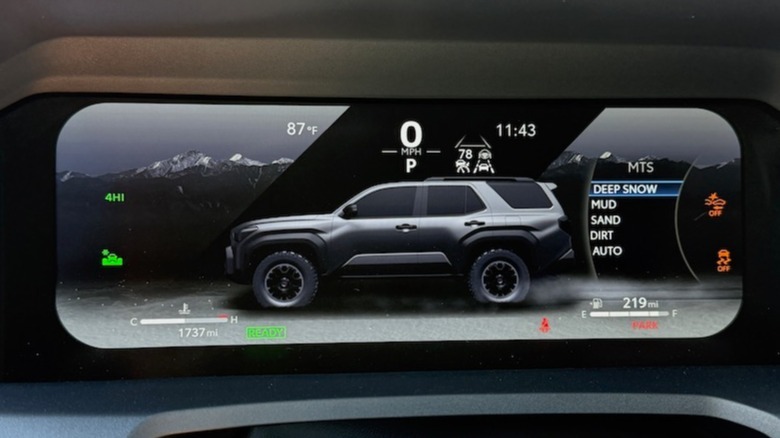
The driver display screen with its 12.3-inches of gauge real-estate is high resolution and easy to see. It feels premium. The 14-inch center screen, on the other hand, is too big and low on resolution.
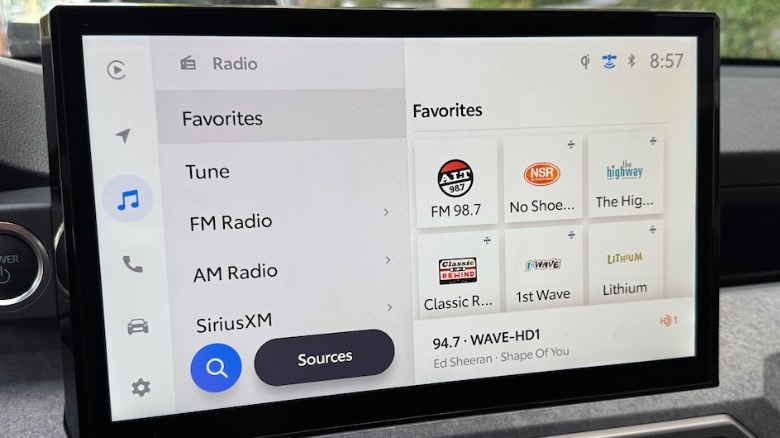
The center screen takes up a large surface area on the dashboard and it feels substandard for the top trim. If the quality of the digital driver display weren't so good, the center screen wouldn't be as underwhelming, but that juxtaposition makes it stand out. The 14-speaker JBL stereo gets properly loud and wireless smartphone connectivity worked well during my test, so we can check those off as wins.
2025 Toyota 4Runner Trailhunter Verdict
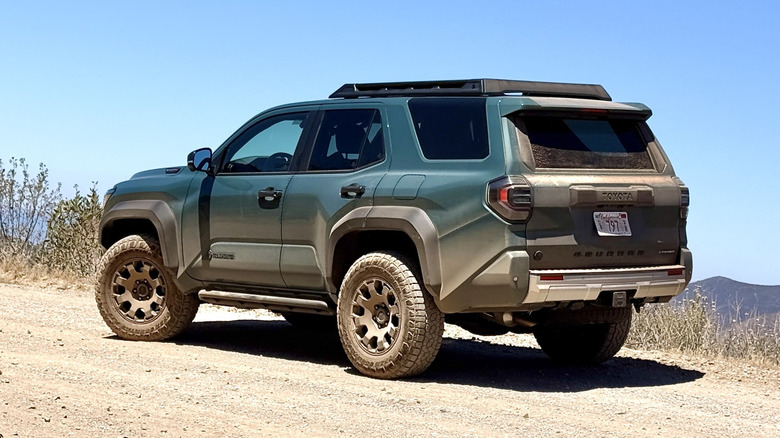
Few vehicles are as capable off-road as the Toyota 4Runner and the latest redesign brought a lot of impressive tech to the table as well. The newest 4Runner is rugged, but also spacious and comfortable on the inside. But all its capability and comfort comes at a cost. A standard two-wheel-drive SR5 model is currently priced at $42,765 (including $1,495 destination fee). That's not much more than the base-trim V6 model from the previous generation, but the parity slips when you head into the upper trim levels. The Trailhunter I tested had a price tag of $69,713, and that was before a few tariff-induced pricing increases hit Toyota's bottom line, raising it a few hundred dollars from there.
So for all the bells and whistles, a top-trim 4Runner will cost you over $70,000 (the TRD Pro is almost a dollar-for-dollar match with the Trailhunter with some unique equipment of its own). That's well into Land Cruiser territory, even with some of the same interior and off-road options equipped to the more-luxurious of the two off-road SUV siblings. It's also more than a Jeep Wrangler Rubicon and nearly as costly as the whoop-conquering Ford Bronco Raptor.
There's a lot to like about the 4Runner in its most kitted-out off-road trims, but if it were my money I'd likely buy something in the middle of the range like the TRD Sport. It still has plenty of off-road capability and it's around $15k less than the Trailhunter.
Post Script: Counting The Logos
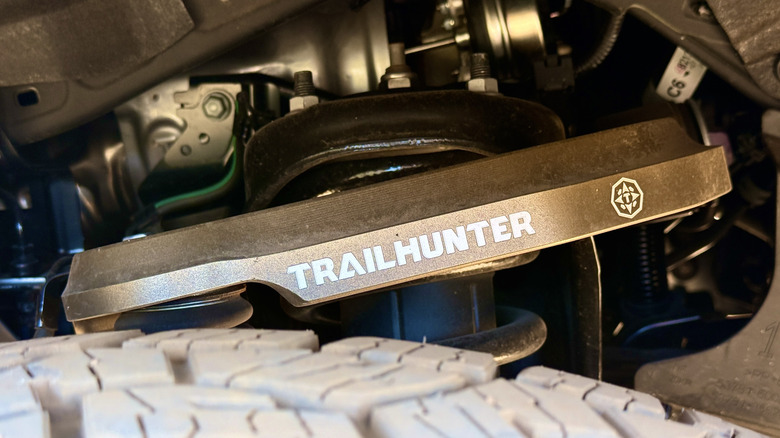
A little while ago, driving the blisteringly-fast Cadillac CT5-V Blackwing, I started counting logos. How many 'V' logos showed up on the inside and outside of the car? 26. The Trailhunter, while it doesn't seem as intent on letting you know exactly what trim level you're driving all the time, definitely has a few extra emblems and badges here and there, so let's count it out.
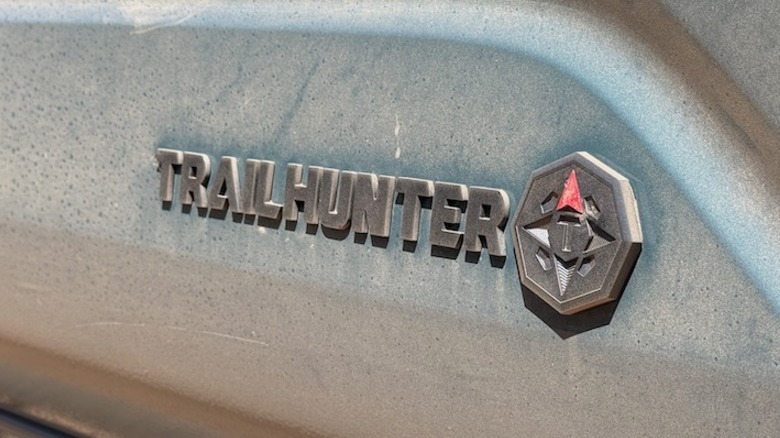
On both of the front doors, there's a Trailhunter logo, and there's one on the liftgate. The ARB roof rack is sporting a fourth "T" for Trailhunter. The driver's-side headlight has "Trailhunter" etched in, while the passenger side has the compass-style T logo. That's six.

Each side of the 4Runner's front suspension shows off the Trailhunter name and the logo, but we'll count those together, so we're up to eight. Just one T logo under the hood and Trailhunter stamped into the front skid plate: we're at a total of 10 for the exterior.
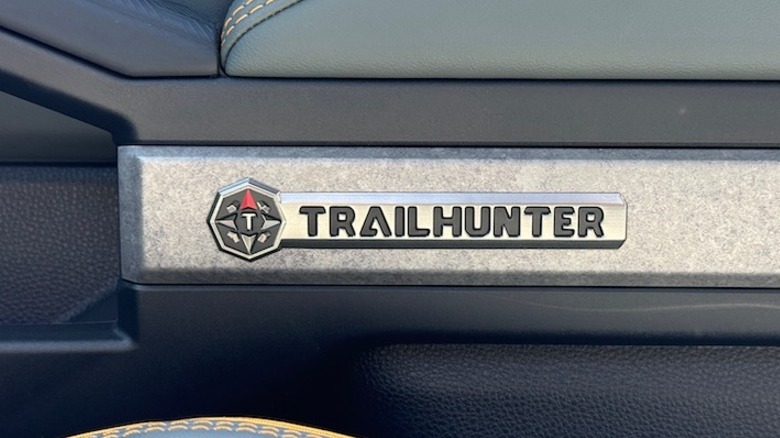
Inside, all four seating positions get T logos or the full Trailhunter on their floor mats. That's 14. Each of the front doors get a Trailhunter badge, bringing the total to 16. Not bad at all.
Want the latest in tech and auto trends? Subscribe to our free newsletter for the latest headlines, expert guides, and how-to tips, one email at a time.
Read the original article on SlashGear.










